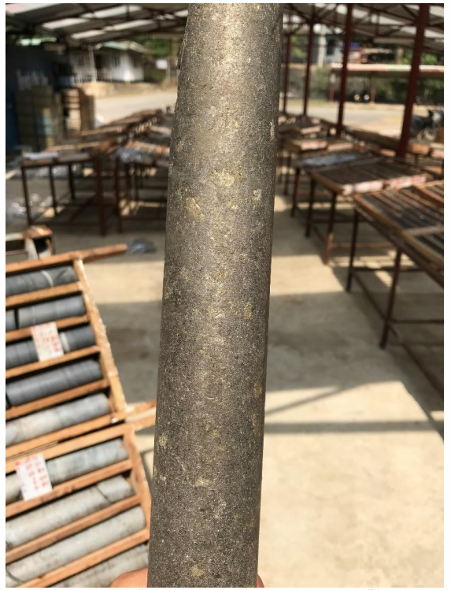Blackstone hits thick zone of nickel sulfides in Ban Chang maiden drilling

Pic: John W Banagan / Stone via Getty Images
Special Report: Blackstone’s Ta Khoa project in Vietnam is revealing its regional prospectivity for valuable nickel sulphides early on with the first three holes drilled into one prospect hitting a thick zone of mineralisation.
Drilling at the Ban Chang prospect intersected a 9.15m wide zone of mineralisation, with the first three holes all intersecting massive sulphide nickel over a 1km strike.
One drill hole alone intersected 4.6m of massive sulphide and semi massive sulphide veins.

These new hits were drilled within a 1.2km-long massive sulphide target that was previously defined by high priority electromagnetics (EM).
Blackstone Minerals managing director Scott Williamson is confident this new find could have the scale and geometry to be mined as a bulk underground mining scenario.
“We’ll continue to explore Ban Chang’s potential to become a supplementary high-grade feed source to the main Ban Phuc disseminated sulphide orebody, with further holes planned for drilling in this area,” he said.
Blackstone says drilling continues to intersect massive sulphides within metres of the modelled EM plates, which confirms the potential to “unlock the world-class magmatic nickel sulphide geology throughout the Ta Khoa nickel sulphide district”.
Maiden drilling at Ban Chang, which sits 2.5km southeast of a 450,000-tonne-per-annum processing facility and the main Ban Phuc deposit, is part of an ongoing campaign to target regional massive sulphide vein mineralisation to expand the resource at Ta Khoa.
A second drill rig will continue to test other high-priority EM targets generated from 25 massive sulphide vein prospects at Ta Khoa.
These prospects are analogous to the previously mined Ban Phuc, where previous owners successfully mined 975,000 tonnes of high-grade ore at grades of 2.4 per cent nickel and 1 per cent copper between 2013 and 2016.
Why sulphide is superior
Nickel is usually found in two main ore types – sulphide or laterite.
Sulphides are much cheaper and easier to turn into battery grade nickel sulphate than nickel laterites and fetch a higher price.
Supply of nickel sulphides is also declining because of a lack of new discoveries at the same time that demand continues to climb.
At Ta Khoa, the previous owners spent over $US136m ($195m) on building the infrastructure, including the underground mine and 450,000-tonne-per-annum concentrator.
Blackstone is thinking much bigger than just mining nickel. In April the company signed a binding agreement with South Korea’s largest electric vehicle battery cathode manufacturer, Ecopro BM, to investigate the development of a downstream processing facility in northern Vietnam that could potentially process nickel concentrate from Ta Khoa.
A scoping study on downstream processing to produce nickel sulphate for the lithium-ion battery industry, along with a Ban Phuc maiden resource, is on track for completion in Q3.
>> NOW WATCH: RockTalk: Battery metal stocks and the ‘new energy world’
This story was developed in collaboration with Blackstone Minerals, a Stockhead advertiser at the time of publishing.
This story does not constitute financial product advice. You should consider obtaining independent advice before making any financial decisions.
Related Topics
UNLOCK INSIGHTS
Discover the untold stories of emerging ASX stocks.
Daily news and expert analysis, it's free to subscribe.
By proceeding, you confirm you understand that we handle personal information in accordance with our Privacy Policy.








